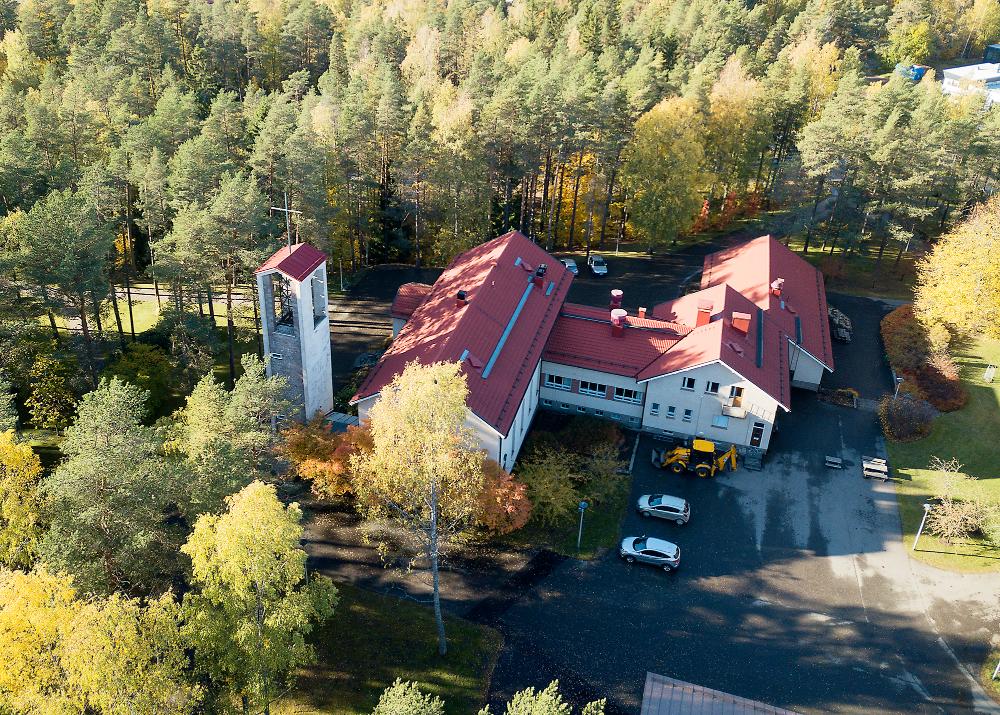Evästeet
EvästeetLinkki avautuu uudessa välilehdessä
The Christian tradition in Southern Lohja began already in the 13th century when the archbishop of Denmark, Andreas Synnesen, visited the Western Uusimaa region and invited people to mass baptism at baptism spring Kastlähde in Teutar. Nowadays there is a monument, which was erected in 2005, to commemorate the event and the spring.
In 1940, the parish of Lohja bought a piece of land from the Kyrkstad manor in order to start constructing a church in Virkkala. The foundation was laid in September 1952 and the church was finished in August of 1953. The church was designed by architect Mikael Nordenswan and most of the building material was donated by a local limestone mining company, Lojo Kalkverk Ab - Lohjan Kalkkitehdas Oy. At first, the building was called simply the parish house of Southern Lohja. The name Virkkala Church came into use only in the year 1989. The church bells were officially taken into use on Christmas Eve in 1958.
During 2009-2010 the church underwent a complete renovation. After the renovation Kaiku Mäenpää, who was then the vicar of Lohja parish, dedicated the building to the Holy Cross. The building hadn’t earlier been officially dedicated as a church. That’s why the Virkkala church is also called the Chapel of the Holy Cross.
Many people took part in building the church and among the most influential ones were mining counselor Petter Forsström, the lady of the Kyrkstad manor Anna Dahlberg, teacher J. C. Backman and pharmacy counselor Mr. Björksten.
Altogether 170 people fit inside the church.
The altar painting of the church was painted by Ali Munsterhjelm in 1909 and it was moved to Virkkala church from St. Lawrence’s church in Lohja after the construction of Virkkala church.
The stained glass of Virkkala church represents Jesus in the crib and it’s designed by Karin Mascitti-Slotte. The stained glass was donated by mining counselor Petter Forsström.
Baptismal font was donated by the Lotta Svärd organisation and the Martha organisation of the Finnish air defence. Knut Kullberg, who was a teacher at the school of the mining company, was supervising the making of this baptismal font.
Ryijy, which is a sort of a tapestry rug, in front of the altar was woven together by the members of the Finnish-speaking and the Swedish-speaking Martha organizations in Lohja. The model of the ryijy was designed by Margit Forsström and Asta Jansson.
Chairs of the church were made in the Riihimäki central prison.
There are two organs in the Virkkala church. The older mechanical organ, Opus 7, was built by the organ factory Veikko Virtanen in 1958. This organ was donated by the mining counselor Forsström and the instrument was taken into use on the 27th of April 1958. The newer digital organ was made by organ factory Allén in 2011. Both instruments are fully playable.

EvästeetLinkki avautuu uudessa välilehdessä